Embark on the thrilling adventure of the 13-Day Everest Base Camp Trek, starting from Kathmandu, Nepal. With over 30,000 people attempting this incredible journey each year, it’s no wonder that the trek to Everest Base Camp has become a bucket list item for adventure seekers worldwide.
This immersive experience offers nature enthusiasts the opportunity to connect with the awe-inspiring beauty of the world’s highest mountain, Mount Everest. From the moment you step foot in Kathmandu, the journey is filled with excitement, culture, and breathtaking landscapes.
With a live tour guide available in English, travelers can explore the rich cultural heritage, diverse wildlife, and stunning landscapes that the Sagarmatha Zone has to offer.
So, lace up your boots, prepare for an unforgettable adventure, and get ready to conquer the Everest Base Camp Trek.
Good To Know
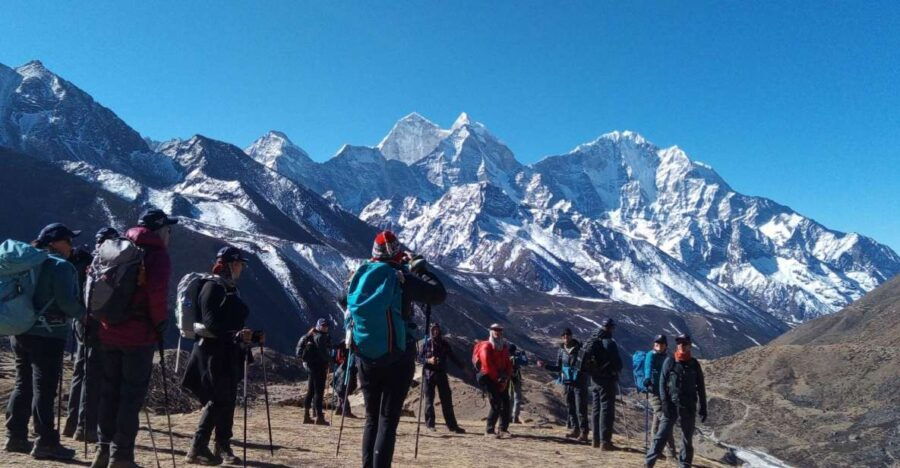
- Free cancellation available up to 24 hours in advance for a full refund
- Flights between Kathmandu and Lukla can be delayed or cancelled due to bad weather, so buffer days are advised
- Connect with nature and enjoy views of the world’s highest mountain
- Learn survival skills for high-altitude conditions during outdoor adventures
Activity Details and Logistics
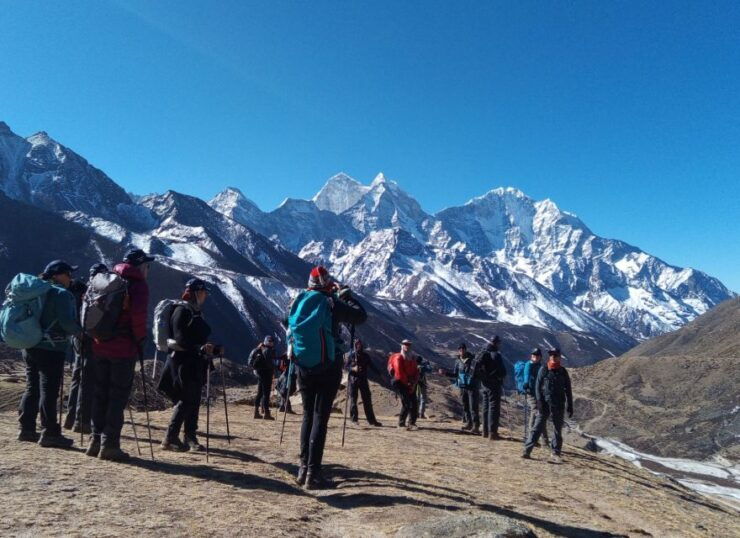
The activity details and logistics for the 13-day Everest Base Camp Trek can be found below.
When it comes to accommodation options, participants can rest assured that they’ll be provided with a comfortable stay at Kathmandu Suite Home Hotel on their first day in Kathmandu. Breakfast is included, ensuring that they start each day with a hearty meal.
As for the trekking difficulty, it’s important to note that this adventure isn’t for the faint of heart. The journey to Everest Base Camp involves challenging terrains and high altitudes, requiring participants to have a good level of fitness and adaptability. However, with the guidance of experienced tour guides and proper acclimatization days in Namche Bazaar and Dingboche, trekkers will be well-prepared for the adventure ahead.
Like hiking? Other Mount Everest walking trails we've reviewed
Live Tour Guide and Pickup
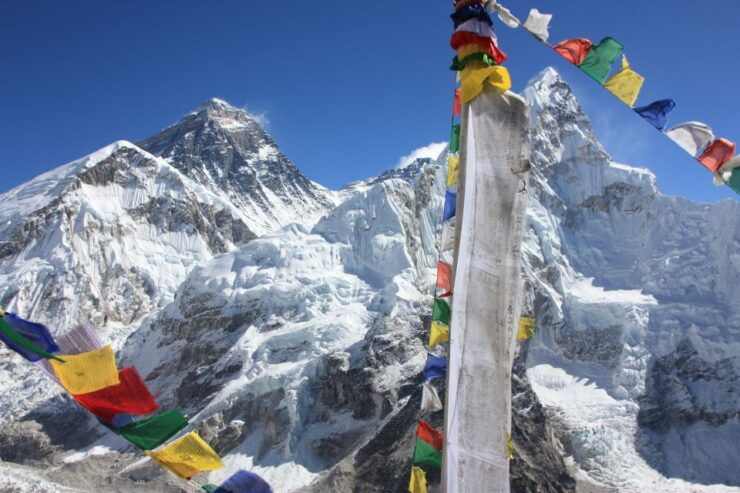
A live tour guide will be available to assist and guide participants throughout the 13-day Everest Base Camp Trek, ensuring a memorable and informative experience. The guide will provide valuable insights about the region, its culture, and the challenges of trekking in high-altitude conditions. They will be fluent in English, allowing for clear communication and understanding.
Plus, airport pickup is included in the package. Upon arrival in Kathmandu, you will be greeted by the tour guide holding a whiteboard or paper with their name outside the airport terminal hall. This convenient service eliminates the hassle of finding transportation and ensures a smooth start to the adventure.
To further illustrate the highlights of this incredible journey, take a look at the table below:
| Day | Itinerary | Highlights |
|---|---|---|
| 1 | Arrive in Kathmandu | Get picked up from the airport and settle in |
| 2-12 | Trekking Itinerary | Explore stunning landscapes and acclimatize to altitude |
| 13 | Return to Kathmandu | Reflect on the amazing adventure |
Embarking on the Everest Base Camp Trek with a live tour guide and convenient airport pickup guarantees an immersive and worry-free experience. Get set for an adventure of a lifetime!
Flight and Permit Fees
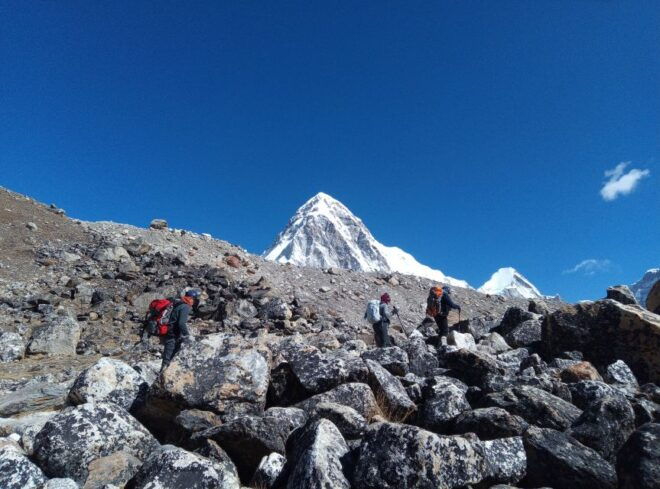
Flight and permit fees for the 13-day Everest Base Camp Trek in Kathmandu are essential expenses that need to be paid in cash. It’s important to note that these fees are subject to change, so it’s advisable to check the latest updates before embarking on the trek.
Here are five key points to consider regarding flight and permit fees:
Cash payment: It’s crucial to have enough cash on hand to cover the fees as credit cards aren’t accepted for these payments. It’s recommended to carry Nepalese rupees to ensure a smooth transaction.
Weather conditions: Flights between Kathmandu and Lukla, the starting point of the trek, can be disrupted due to bad weather. It’s wise to allocate buffer days in the itinerary to account for any potential delays or cancellations.
Permit costs: There are two permits required for the Everest Base Camp Trek: the Sagarmatha National Park Permit and the TIMS (Trekkers’ Information Management System) Card. The costs for these permits aren’t included in the tour price and need to be paid separately.
Permit process: The permits can be obtained in Kathmandu, either through a trekking agency or directly from the respective government offices. It’s essential to carry valid identification documents for the permit application.
Flexibility: It’s essential to remain flexible with the trekking schedule, considering the unpredictable weather conditions. Being open to adjusting the itinerary can help ensure a safe and enjoyable trekking experience.
Importance of Buffer Days
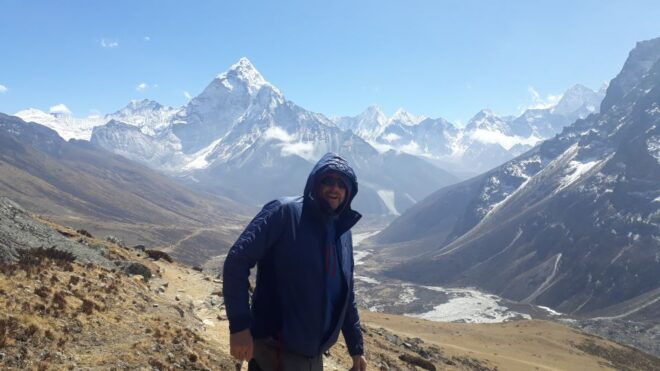
To ensure a smooth and flexible trekking experience, it’s crucial to allocate buffer days in the itinerary for the Everest Base Camp Trek. These extra days allow for acclimatization, which is essential when trekking at high altitudes. Acclimatization helps the body adjust to the decreased oxygen levels, reducing the risk of altitude sickness.
The Everest Base Camp trek presents many challenges, such as unpredictable weather conditions and the possibility of flight delays or cancellations. Buffer days provide a safety net, giving trekkers the opportunity to rest, recover, and adapt to the altitude before continuing their journey. They also allow for flexibility in case of any unforeseen circumstances.
More Great Tours NearbyTour Schedule and Availability
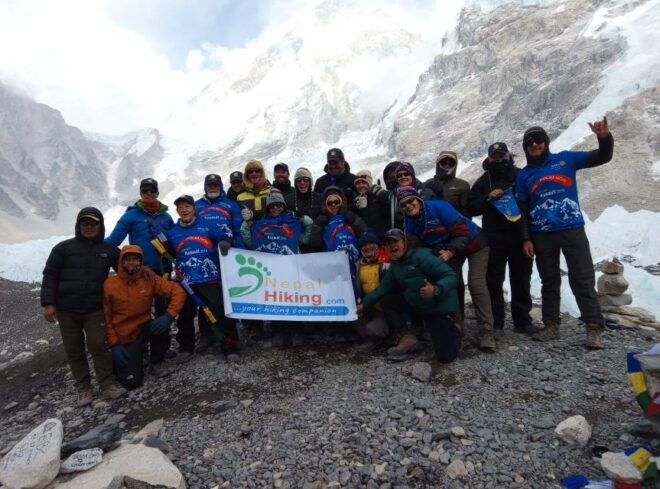
The tour schedule and availability for the 13-day Everest Base Camp Trek can be found on the official website or by contacting the tour operator directly.
Here are some important details to consider when planning your adventure:
Tour group size: The group size for the trek is typically around 10-15 people, allowing for a more intimate and personalized experience.
Recommended gear: It’s essential to pack the right gear for the trek. Some recommended items include sturdy hiking boots, warm clothing layers, a good quality sleeping bag, a backpack, trekking poles, and a water bottle.
Embarking on the Everest Base Camp Trek is an incredible opportunity to connect with nature, experience the local culture, and witness the majestic beauty of the world’s highest mountain.
Whether you’re a seasoned trekker or a beginner, this adventure will surely leave you with unforgettable memories.
Savings on Activity Cost
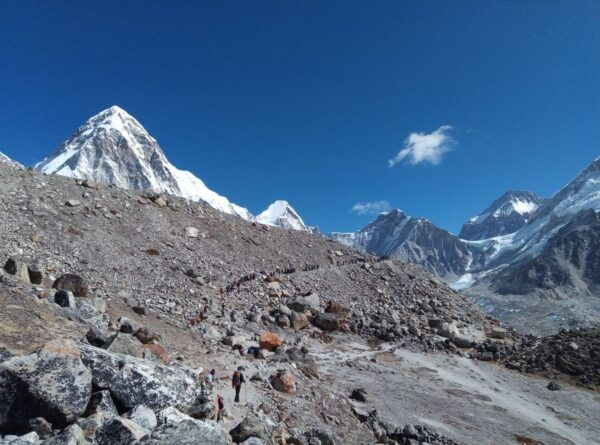
You can save up to 25% on the activity cost for the 13-day Everest Base Camp Trek. This is a great opportunity to experience the adventure of a lifetime while also saving some money. One way to save on costs is by bringing your own trekking equipment. While sleeping or down jackets can be bought or rented in Kathmandu, bringing your own gear can help cut down on expenses. Plus, enjoying the local culture can be a rewarding and cost-effective way to enhance your trekking experience. Embrace the hospitality of the residents and blend into local life to truly connect with the people and the surroundings. By being resourceful and embracing culture, you can make the most of your Everest Base Camp Trek while saving money at the same time.
| Saving Tips | Percentage of Savings |
|---|---|
| Bring your own equipment | 10% |
| Embrace culture | 15% |
Experience Highlights
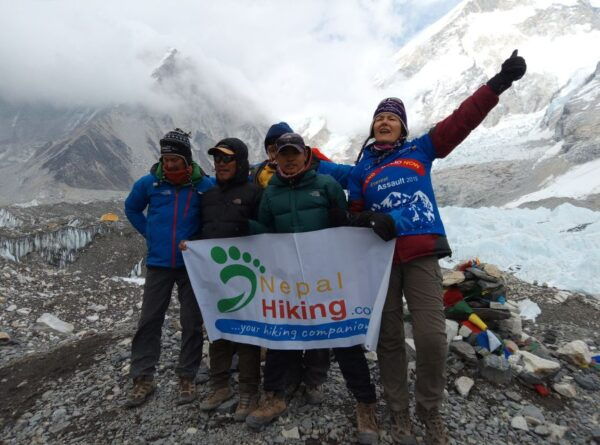
Connecting with nature and enjoying views of the world’s highest mountain, the Everest Base Camp Trek offers an unforgettable experience of various cultures, wildlife, and landscapes. Here are the experience highlights of this incredible journey:
Cultural immersion: Enjoy the rich local culture of the Sherpa people, interacting with them, and witnessing their traditional way of life.
Survival skills: Learn essential survival skills for high-altitude conditions, such as acclimatization techniques and proper trekking gear.
Wildlife encounters: Spot exotic wildlife like the elusive snow leopard, Himalayan monal pheasant, and musk deer as you traverse through the Sagarmatha National Park.
Spectacular landscapes: Marvel at the breathtaking landscapes that include lush forests, picturesque valleys, and rugged mountain terrains.
Spiritual journey: Observe the mesmerizing prayer ceremony at Tengboche Monastery, a spiritual hub in the Everest region.
Embark on this adventure and create memories that will last a lifetime, as you explore the wonders of the Everest Base Camp Trek.
Trekking Itinerary
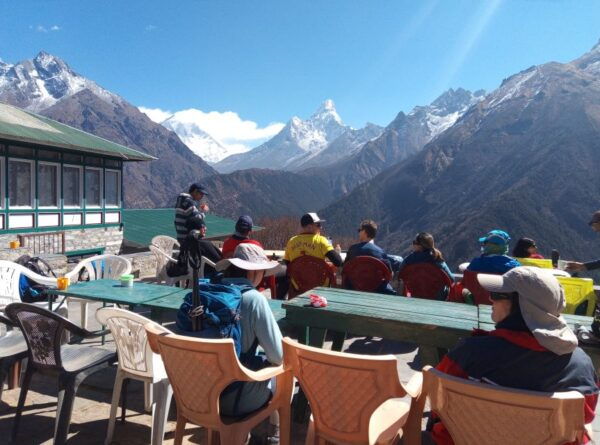
After flying to Lukla, participants of the 13-day Everest Base Camp Trek will begin their journey by trekking to Phakding. This is just the beginning of an adventure filled with trekking challenges and breathtaking scenic landscapes.
From Phakding, the trek continues to Namche Bazaar, where trekkers will have an acclimatization day to adjust to the high altitude.
The next leg of the journey takes them to Tengboche, where they can visit the famous Tengboche Monastery and witness a prayer ceremony.
Trekking to Dingboche follows, with another day for acclimatization before reaching Lobuche.
The highlight of the trek is a visit to Everest Base Camp, followed by a return to Gorakshep. For stunning views, trekkers will hike to Kalapathar before making their way back to Namche Bazaar and finally, Lukla.
This itinerary promises an unforgettable experience amidst the challenges and beauty of the Himalayas.
Common Questions
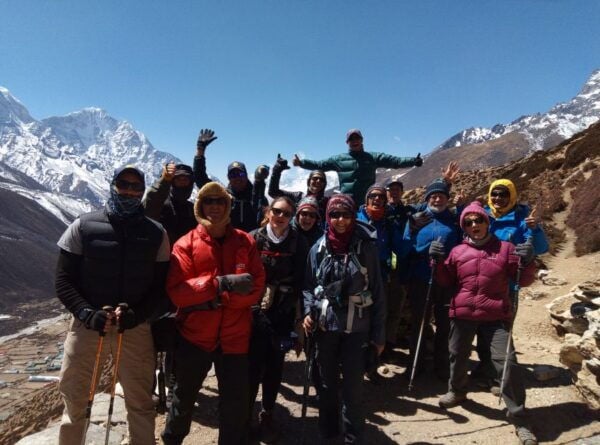
What Is the Difficulty Level of the Everest Base Camp Trek?
The Everest Base Camp Trek is considered challenging due to high altitude and rugged terrain. Tips for the trek include proper acclimatization, physical fitness, and packing essentials. It offers an adventurous experience amidst stunning landscapes and the world’s highest peak.
Can I Bring My Own Sleeping Bag or Do I Have to Rent One in Kathmandu?
Yes, you can bring your own sleeping bag or rent one in Kathmandu. Rental fees may apply. Having a comfortable sleeping bag is essential for a successful trek to Everest Base Camp.
Are There Any Age Restrictions for Participating in the Trek?
Age restrictions and safety precautions should be considered for participation in the trek. It is essential to ensure that individuals are physically fit and able to handle the challenges of high-altitude conditions.
Is There a Weight Limit for the Luggage That Can Be Carried During the Trek?
There is a weight limit for luggage during the trek. Baggage restrictions apply due to the challenging terrain and limited carrying capacity. It’s important to pack efficiently and follow the guidelines provided by the tour organizers.
What Kind of Food and Accommodation Options Are Available During the Trek?
Food options and accommodation facilities during the trek are diverse and cater to different preferences. From local Nepali cuisine to international dishes, trekkers can enjoy a variety of meals. Accommodations range from tea houses to lodges, providing comfortable resting places along the journey.
The Sum Up
Embark on the adventure of a lifetime with the 13-Day Everest Base Camp Trek. This immersive experience allows you to connect with the breathtaking beauty of Mount Everest and the Sagarmatha Zone.
With a live tour guide, you can explore the rich cultural heritage and stunning landscapes of Nepal. From the famous Tengboche Monastery to the awe-inspiring views from Kalapathar, this trek is sure to leave you with memories that will last a lifetime.
Don’t miss the chance to experience the wonders of the Himalayas firsthand.
You can check availability for your dates here: More Great Tours Nearby